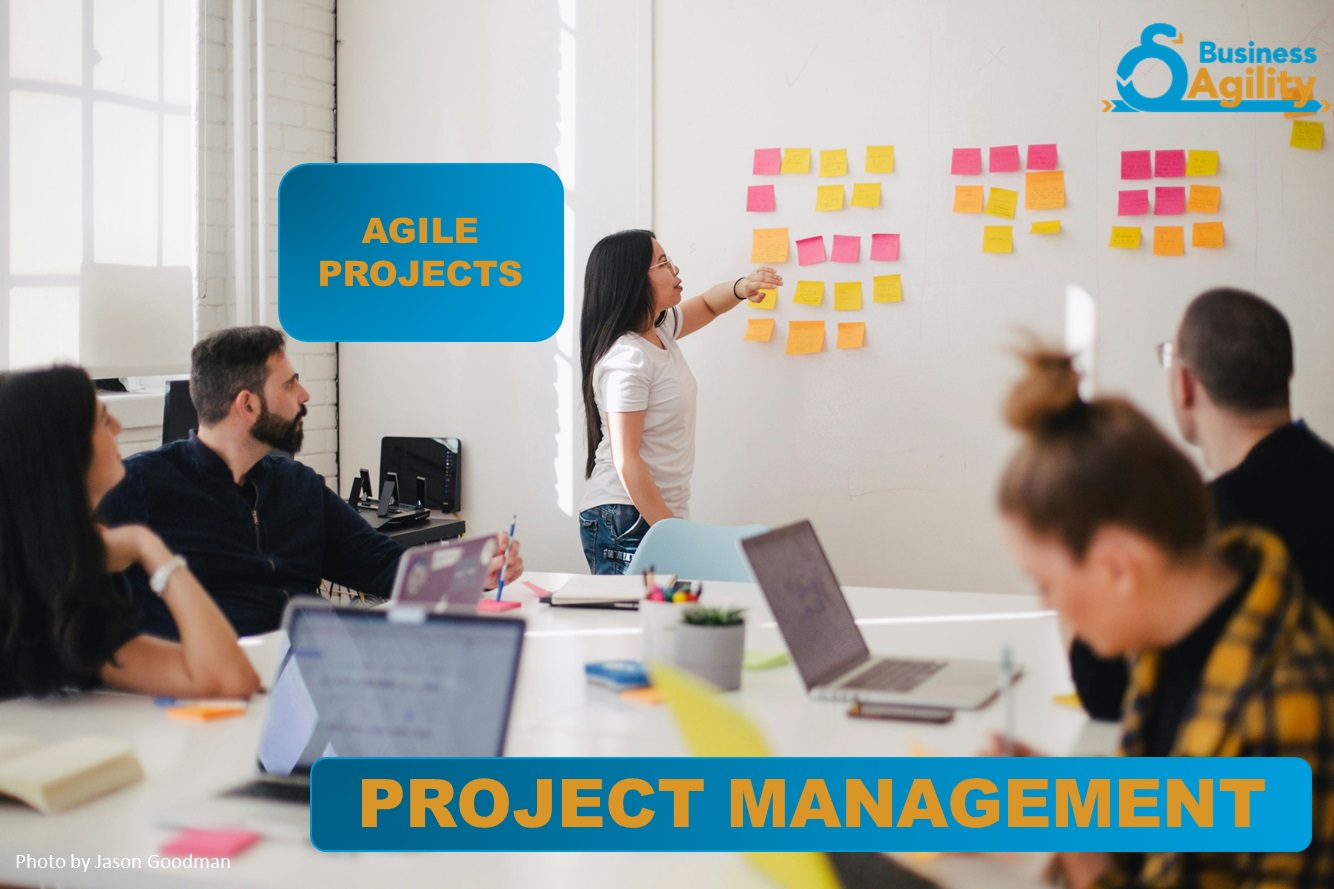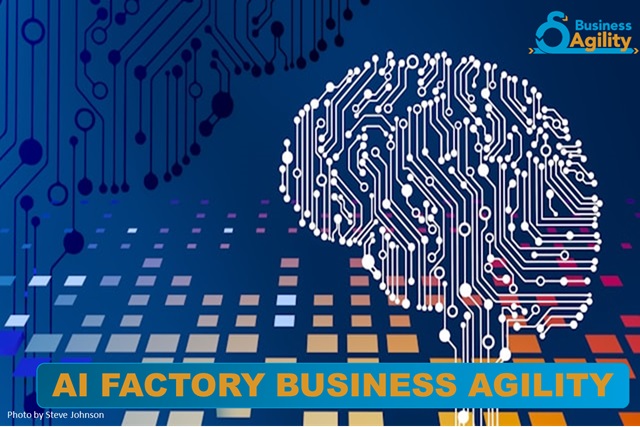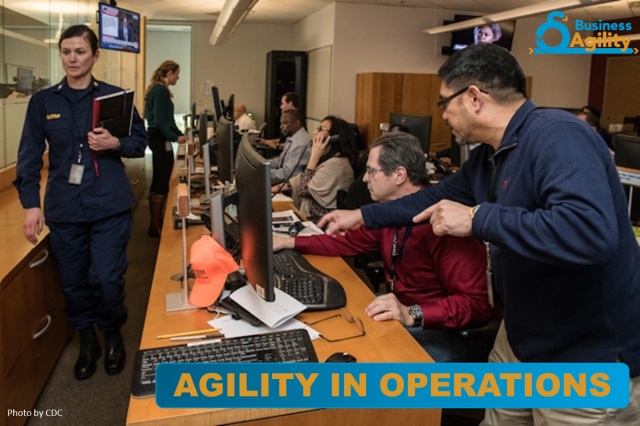ABSTRACT: AI-Directed Blog Post on how Marketing has transformed from the structured 4Ps framework to Agile and AI-assisted strategies, emphasizing flexibility, collaboration, and data-driven personalization. This evolution enables businesses to adapt quickly to market changes and enhance customer experiences, making it essential to understand these shifts in today’s dynamic business landscape.
Marketing, as a discipline, has undergone significant transformations over the decades. These changes reflect the evolving business landscape, technological advancements, and shifts in consumer behavior. One of the most pivotal moments in marketing history was the introduction of the 4Ps—Product, Price, Place, and Promotion—by E. Jerome McCarthy in the 1960s. This framework not only revolutionized the way businesses approached marketing but also laid the foundation for modern marketing strategies, including Agile Marketing. For business students, understanding this evolution is crucial for grasping how marketing practices have adapted and grown over time.
Marketing Before the 4Ps: A Fragmented Approach
Before the formal introduction of the 4Ps, marketing was a more fragmented and less structured discipline. Marketers focused on various elements, but there was no unified framework to guide their efforts. Here’s a closer look at what marketing looked like before the 4Ps:
Product-Centric Focus
- Product Quality and Features: Marketers primarily concentrated on ensuring that the product met customer needs and was of high quality. The focus was on the product itself, often overlooking the broader marketing strategy.
- Brand Identity: Building a strong and consistent brand identity was crucial. However, without a structured framework like the 4Ps, the emphasis was mainly on maintaining product reliability and brand recognition.
Distribution and Sales
- Sales Channels: Identifying and managing effective sales channels were critical tasks. Marketers relied heavily on wholesalers, retailers, and direct sales techniques.
- Sales Techniques: Personal selling was a dominant strategy. Sales representatives were key in persuading potential customers and closing deals, often relying on their intuition and experience.
Advertising and Promotion
- Advertising: Advertising was a primary tool for creating awareness and driving demand. Traditional media like print, radio, and early television were the main channels, and the focus was on message delivery rather than a cohesive strategy.
- Promotional Activities: Marketers used various promotional activities, such as trade shows and public relations efforts, to generate interest. However, these activities were often ad hoc and lacked strategic integration.
Pricing Strategies
- Cost-Based Pricing: Pricing strategies were typically straightforward, based on the cost of production plus a markup for profit.
- Competitive Pricing: Marketers adjusted prices in response to competitors, but without a broader strategic framework, pricing decisions were often reactive rather than proactive.
Customer Relationships
- Customer Loyalty: Building and maintaining customer loyalty through good service and product reliability was essential.
- Community Engagement: Engaging with local communities was a common practice, but it was often informal and lacked strategic alignment with broader marketing goals.
The Introduction of the 4Ps: A Paradigm Shift
The introduction of the 4Ps marked a turning point in marketing. This framework provided a structured approach that allowed marketers to integrate various elements into a cohesive strategy. The 4Ps—Product, Price, Place, and Promotion—became the pillars of modern marketing, transforming the discipline in several key ways:
Product
- The focus shifted from just quality and features to product differentiation and innovation. Marketers began to consider the entire product lifecycle, from development to obsolescence, ensuring that products met evolving consumer needs.
Price
- Pricing strategies became more sophisticated, incorporating not just cost and competition but also perceived value and consumer psychology. Dynamic pricing models emerged, allowing businesses to adjust prices based on demand, competition, and market conditions.
Place
- Distribution strategies evolved with a focus on efficiency and reach. The introduction of the 4Ps led to the optimization of supply chains and the exploration of new distribution channels, including the rise of e-commerce in later years.
Promotion
- Promotion became more strategic, with a focus on integrated marketing communications. Marketers began to use a mix of advertising, public relations, sales promotions, and direct marketing to create a consistent brand message across all channels.
The Evolution of Marketing Post-4Ps: Toward Agile Marketing
As businesses and technology continued to evolve, so did marketing strategies. The 4Ps laid the groundwork, but new developments in the business world required further adaptation. Enter Agile Marketing—a modern approach that builds on the 4Ps while addressing the dynamic and fast-paced nature of today’s market environment.
Agile Marketing: The Next Step
- Agile Marketing borrows principles from Agile methodologies used in software development. It emphasizes flexibility, collaboration, and customer-centricity, allowing marketing teams to quickly respond to changes in the market and customer preferences.
- Unlike the traditional, linear approach of the 4Ps, Agile Marketing is iterative. Marketing campaigns are continuously tested, measured, and refined based on real-time data and feedback.
Customer-Centric Focus
- In the post-4P world, the customer is at the center of all marketing activities. Agile Marketing further enhances this focus by using customer data and insights to drive decision-making, ensuring that marketing efforts are highly targeted and relevant.
Integration with Technology
- The rise of digital marketing and technology has transformed how the 4Ps are applied. Today, big data, AI, and automation play crucial roles in optimizing product development, pricing strategies, distribution channels, and promotional activities.
- Marketing automation tools allow for personalized and real-time engagement with customers, while data analytics provides insights that guide strategic decisions.
Collaboration and Transparency
- Agile Marketing encourages cross-functional collaboration and transparency. Teams work together in short sprints, with constant communication and feedback loops, ensuring that everyone is aligned and working towards the same goals.
Emergence of AI-Assisted Marketing
While Agile Marketing has reshaped the way businesses approach strategy and execution, the emergence of AI-assisted marketing has taken these advancements to the next level. AI technologies are revolutionizing how marketers handle data, interact with customers, and execute campaigns, offering unprecedented opportunities for optimization and personalization.
Data-Driven Decision Making
One of the most significant contributions of AI to marketing is its ability to process and analyze vast amounts of data with speed and accuracy far beyond human capabilities. AI-driven analytics tools can sift through customer data, social media activity, purchasing behavior, and more to uncover trends and patterns that might otherwise go unnoticed. This data-driven approach enables marketers to make more informed decisions, ensuring that their strategies are not only based on intuition but also grounded in concrete evidence.
Personalization at Scale
AI also enables personalization at a scale that was previously unimaginable. Through machine learning algorithms, AI can tailor marketing messages, product recommendations, and promotions to individual customers based on their unique preferences and behaviors. This level of personalization significantly enhances customer experience, driving higher engagement, conversion rates, and brand loyalty. For instance, AI can automatically adjust email content for thousands of recipients, ensuring that each message resonates on a personal level.
Automation and Efficiency
Automation is another area where AI has made a substantial impact. Routine marketing tasks—such as sending emails, scheduling social media posts, and managing ad campaigns—can now be handled by AI-powered tools, freeing up marketers to focus on strategy, creativity, and innovation. AI-driven chatbots, for example, can manage customer inquiries 24/7, providing instant responses and gathering valuable data that can be used to improve future marketing efforts.
Integrating Agile Marketing with AI-Assisted Strategies
The integration of Agile Marketing and AI-assisted strategies represents a powerful combination that can transform how businesses approach marketing in the digital age. By blending the flexibility and customer-centric focus of Agile Marketing with the precision and scalability of AI, marketers can achieve a level of responsiveness and efficiency that is unparalleled.
Adaptive and Data-Driven Strategies
Together, Agile Marketing and AI enable marketing teams to be both adaptive and data-driven. AI provides the insights and predictive analytics needed to anticipate market trends and customer needs, while Agile practices ensure that these insights can be quickly turned into actionable strategies. This dynamic combination allows businesses to stay ahead of the curve, rapidly pivoting in response to new information and continuously optimizing their efforts.
Enhanced Customer Experience
The integration of Agile and AI also leads to an enhanced customer experience. Agile practices ensure that customer feedback is rapidly incorporated into marketing strategies, while AI-driven personalization ensures that every interaction is tailored to the individual. This not only improves customer satisfaction but also builds stronger relationships between the brand and its customers.
Scalable and Efficient Campaigns
Finally, the automation capabilities of AI, when combined with the iterative nature of Agile Marketing, allow businesses to scale their marketing efforts without sacrificing quality or efficiency. Campaigns can be launched, adjusted, and expanded with minimal manual intervention, ensuring that marketing teams can focus on innovation and strategic growth rather than getting bogged down by routine tasks.
Future of Marketing
The introduction of the 4Ps was a transformative moment in the history of marketing, providing a structured framework that has guided businesses for decades. However, as the market environment has evolved, so too have the strategies that businesses must employ to succeed. Agile Marketing and AI-assisted strategies represent the next steps in this evolution, offering the flexibility, speed, and precision needed to thrive in today’s fast-paced world.
For business students, understanding the journey from pre-4P marketing to today’s Agile and AI-driven landscape is essential. The principles behind the 4Ps remain relevant, but their implementation has adapted to meet the demands of a rapidly changing market. By embracing both the foundational elements of the 4Ps and the innovative techniques offered by Agile and AI, you’ll be well-equipped to navigate the complexities and opportunities of modern marketing.
As you prepare to enter the business world, remember that marketing is no longer a static process—it’s a dynamic, ever-evolving discipline that requires both a deep understanding of traditional principles and a willingness to adapt and innovate in the face of new challenges.










